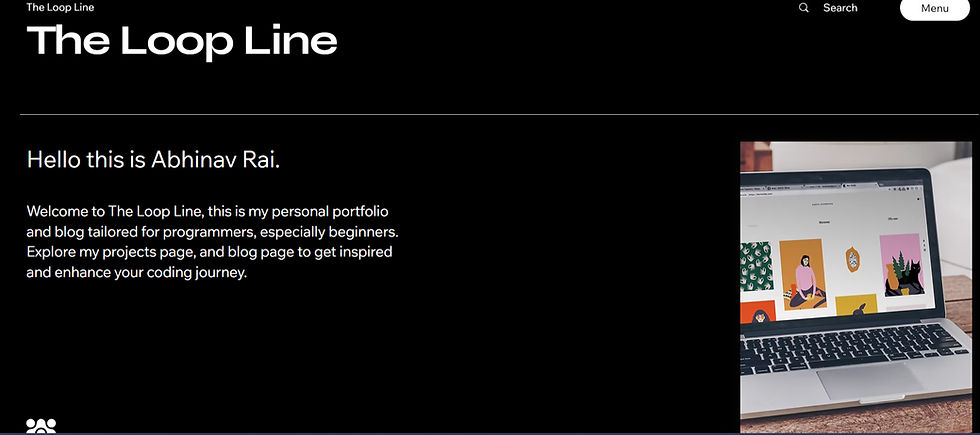Building a Full-Stack Web Application: A Beginner’s Guide to MERN Stack
- Abhinav Rai

- Dec 24, 2024
- 2 min read
If you’re an aspiring developer looking to build dynamic and scalable web applications, the MERN stack might just become your new best friend. It’s a powerful combination of technologies—MongoDB, Express.js, React.js, and Node.js—that lets you use JavaScript for everything from back-end logic to front-end design. In this guide, we’ll break down what makes the MERN stack so special and why it’s worth your time.
What is a Technology Stack?

Think of a technology stack as the toolbox you use to build a software application. It’s a collection of tools, programming languages, and frameworks that work together to create the front-end (what users see) and back-end (how the application works behind the scenes). Picking the right stack is a bit like choosing the right ingredients for a recipe—it can make or break your project’s success. A great stack ensures that your app is efficient, scalable, and easy to develop.
What is the MERN Stack?
The MERN stack is a set of JavaScript-based technologies designed to handle both the front-end and back-end of web development. Here’s a quick rundown:
MongoDB: This is where your data lives. It’s a NoSQL database that stores information in a flexible, JSON-like format.
Express.js: This back-end framework makes it easy to create APIs and handle server-side logic without getting bogged down in unnecessary complexity.
React.js: The crown jewel of the front-end, React helps you build interactive user interfaces that are fast and responsive.
Node.js: The engine that powers the server-side of your app, letting you use JavaScript to run code on the back end.
These tools fit together like puzzle pieces, creating a smooth development experience where everything speaks the same language—JavaScript.

Why is MERN Better Than Other Stacks?
So, why choose MERN over the countless other stacks out there? Here are some reasons it stands out:
One Language to Rule Them All: MERN uses JavaScript from start to finish. This means you don’t need to learn a different language for the back-end, making the development process much simpler.
Massive Community Support: Both React and Node have huge developer communities. Need help? There’s probably already a solution out there.
Flexibility and Scalability: MongoDB’s schema-less database structure and React’s modular components make it easy to scale your app as it grows.
High Performance: Thanks to Node.js’s event-driven architecture, MERN apps are fast and efficient.
Future-Proof: MERN’s modern design makes it a great choice for building applications that can adapt to future trends.
Compared to older stacks like LAMP (Linux, Apache, MySQL, PHP) or even MEAN (which uses Angular instead of React), MERN is often preferred for its simplicity, flexibility, and superior front-end capabilities.
Conclusion
The MERN stack isn’t just a buzzword—it’s a practical, powerful choice for developers who want to create cutting-edge web applications. Whether you’re working on a personal portfolio or a complex, data-driven platform, MERN equips you with the tools to succeed. Plus, with its JavaScript-centric approach, you can focus on honing one language while mastering both front-end and back-end development. Dive into the MERN stack, and who knows? Your next big project might just be a game-changer!




Comments